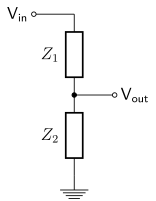
Photo from wikipedia
A current-fed dual-inductor resonant full-bridge dc–dc isolated boost converter is proposed. The converter is most suitable for applications that demand wide input voltage and load ranges. It can be used… Click to show full abstract
A current-fed dual-inductor resonant full-bridge dc–dc isolated boost converter is proposed. The converter is most suitable for applications that demand wide input voltage and load ranges. It can be used as a front-end dc–dc converter that can boost variable low voltage from a power source [battery (home/industrial inverter/industrial UPS application), fuel-cell, or solar-PV] and interface it to a high-voltage dc-link, which typically feeds an inverter. It removes all major drawbacks of conventional current-fed isolated dc–dc converters, namely high-voltage spikes across the switches due to transformer leakage inductance, need for additional start-up circuit, and difficulty in converter tripping in case of faults. Soft-switching of rectifier didoes and clamping power switches is load independent leading to good efficiency over entire load range. Converter can be operated with D < 0.5, making it suitable for wide input voltage range applications. A detailed comparative analysis with state-of-the-art converters for wide input voltage range applications considering the major important factors, such as power device utilization, transformer utilization, inductive energy requirement, and dc capacitors utilization, confirms the superiority of the proposed converter. Experimental results for a 2.5 kVA inverter application with an input dc voltage range of 90–160 V and output ac voltage of 230 V are provided.
Journal Title: IEEE Transactions on Industrial Electronics
Year Published: 2021
Link to full text (if available)
Share on Social Media: Sign Up to like & get
recommendations!